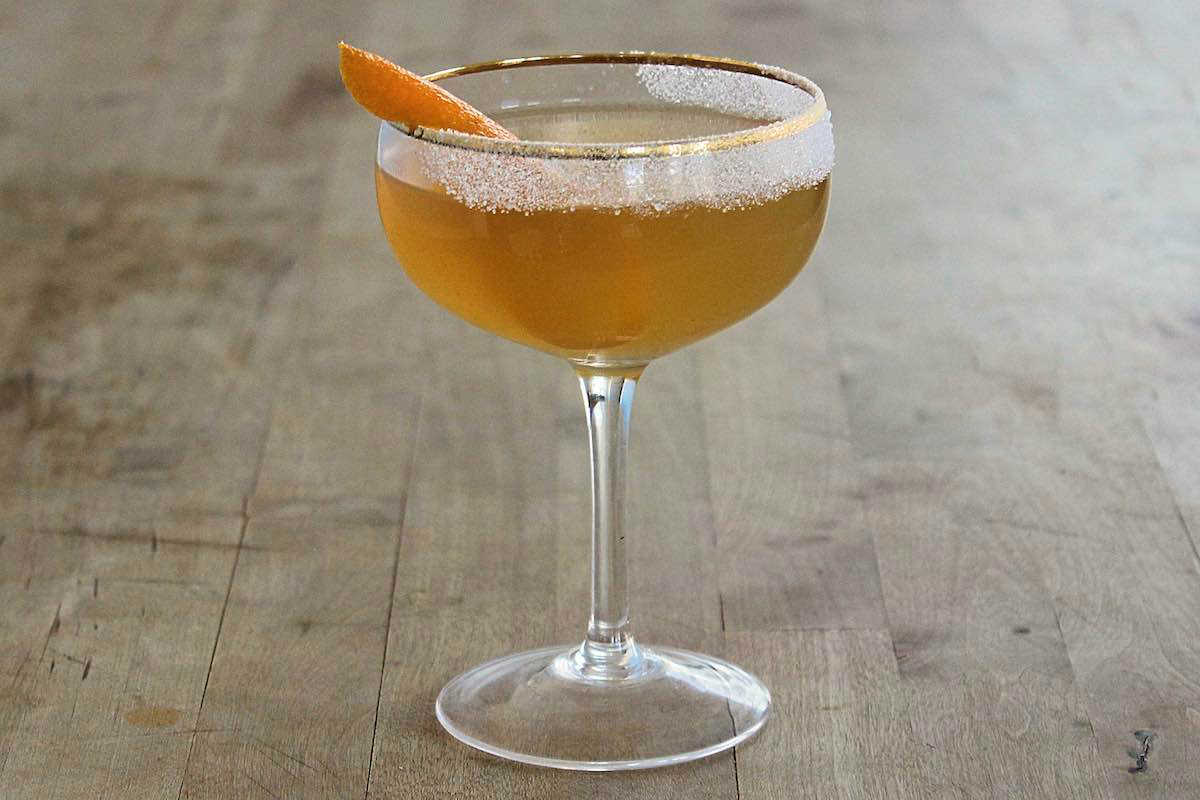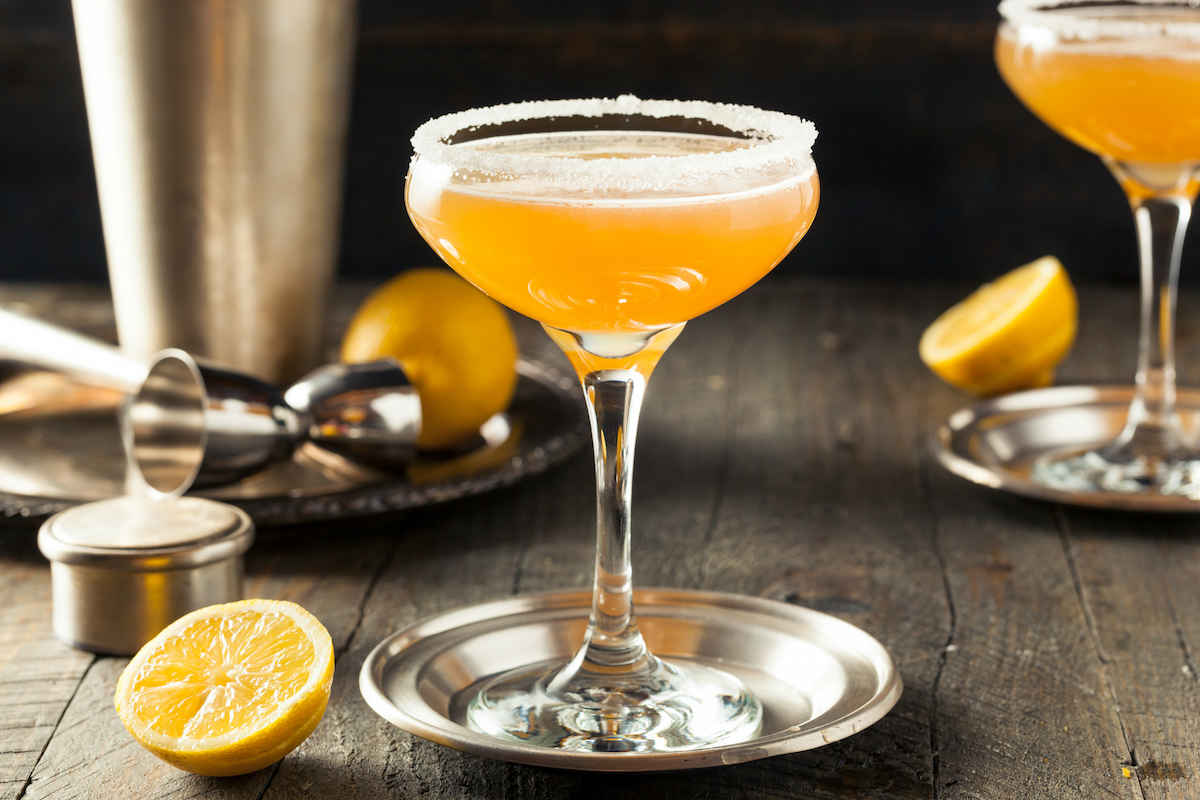One of the occupational hazards of the rum-obsessed is pondering how to sneak rum—and which rum in particular—into cocktails traditionally made with a different spirit. And considering the strong response to my prior column, Choosing the Best Rum for Old-Fashioneds, let’s not mess with a winning formula. So, this month, I’m rum-ifying another classic cocktail, and one that may seem a less obvious choice: the Sidecar.
It’s practically a natural law that the combo of sweet, sour, and strong spirit makes for an enticing recipe. There’s a nearly infinite set of combinations of sour citrus (lemon, lime), sweeteners (syrups, liqueurs), and spirits. These recipes follow the sour pattern—the simple genius behind cocktails like the Daiquiri, Margarita, Whiskey Sour, Gimlet, and Pisco Sour.
Sour cocktails are all about ingredient ratios. Generally, you start with one-half to one ounce of citrus, blend it with roughly the same amount of something sweet, such as a syrup or liqueur, and then combine all that with two to three times the amount of base spirit. Here, I’ll take on the Sidecar, a Prohibition-era classic comprised of cognac, lemon juice, and triple sec. If you’re not familiar with the triple sec category, that’s okay. For our purposes, think of it as one of the sweet orange flavored liqueurs you’ve seen around, such as Cointreau, Grand Marnier, Combier, or curacao.
The Classic Sidecar Cocktail Recipe

Photo: Tom Macy
1.5 oz cognac, or other aged grape brandy
0.75 oz lemon juice
0.75 oz sweet orange liqueur, e.g. Grand Marnier
Shake with ice, strain into (an optionally sugar rimmed) coupe. Garnish with a lemon wedge or twist.
Morphing the above into a rum-based Sidecar sounds simple (“Use rum instead of cognac!”) until you get to selecting the right rum. You weren’t going to just grab that bottle of Bacardi Superior, were you?
The Sidecar is an unusual sour in that it utilizes a full-bodied, aged spirit: cognac. The typical sour uses a light, unaged, or lightly aged spirit like gin, blanco tequila, or pisco. In contrast, cognac brings a certain heft and gravitas to the Sidecar. Ideally, the rum we replace it with has similar characteristics. There’s an enormous palette of rums to choose from, so where should you start?
Looking at the Sidecar holistically, it’s clearly French influenced. Cognac is the canonical French spirit, and the vast majority of high-end orange liqueurs like Grand Marnier and Cointreau are of French origin. Even the lemon is more associated with France than is lime, which is most often associated with tropical locales. So when pondering which rum to use, French rum (ahem, “rhum”) springs to mind as a starting point.
For your first foray into a Rum Sidecar, it’s best to ease gently into the French influence. Jason Alexander, owner of Tacoma’s Devil’s Reef, suggested this recipe when asked to share his thoughts on a rummy Sidecar:
Jason’s recipe plays perfectly into the French theme. While not distilled in France, Plantation Barbados 5 does spend time in France in ex-cognac casks. Keeping things in the family, the Pierre Ferrand Dry Curacao is also made in France by the same company. Take note that while the recipe uses twice as much lemon juice as dry curacao, the sweet-sour ratio is maintained by the powdered sugar. (This recipe would also work quite well with other moderately-aged dry rums like Mount Gay Eclipse or the new Bacardi Cuatro.)
While Jason’s Sidecar is refined and very approachable for almost any cocktail lover, the hardcore rhum agricole aficionado may enjoy a Sidecar where characteristic aged rhum agricole notes stand out a bit more boldly. Aged agricole rhums from Martinique and Guadeloupe are among some of the best cane spirits made, but they don’t garner the mind or market share of the bigger players like Bacardi, Mount Gay, Appleton, or Havana Club. You may have to look a little harder for French rhum brands like St. James, Clément, J.M, Damoiseau, and Neisson, but they’re worth the effort.
French rhums are widely available in both unaged and aged versions. While unaged rhum makes for a fabulous Ti’ Punch, we want something aged for our Sidecar. Nothing crazy old and super expensive—just a few years will do. It’s also worth noting that, by law, cognac must be aged in French oak casks, whereas rhum agricoles have more leeway and may spend time in American oak rather than French.
If you’re a rhum agricole fan, try this recipe:
Side by side, the age-induced components of the Select Barrel turn the harmonious, barbershop quartet blend of Jason’s Plantation Barbados Sidecar into a powerhouse vocalist with backup singers. And if the tannins of French oak aren’t your thing, look for aged agricole with less oak influence like Neisson Élevé Sous Bois. Or, heck, go wild, ignore what I said earlier, and try it with unaged agricole such as Duquesne Rhum Blanc.
As with all recipes, proportions are a very personal thing. One person’s overly boozy nightmare is another’s well-balanced tipple. Experiment with different proportions and different rums to find what fits your palate. There’s no need to stick with French-style rhums either. The aged and filtered rums like Banks 5 Island and Plantation 3 Stars will also work well in a Sidecar.
Rum has an incredible range of flavor profiles, and with the classic combination of lemon juice and orange liqueur putting down a backing track, any number of rums can step up to the microphone to make the perfect Sidecar.



